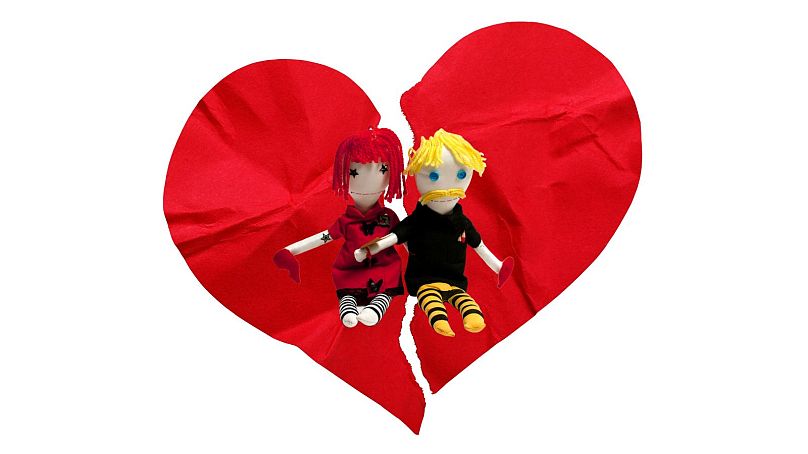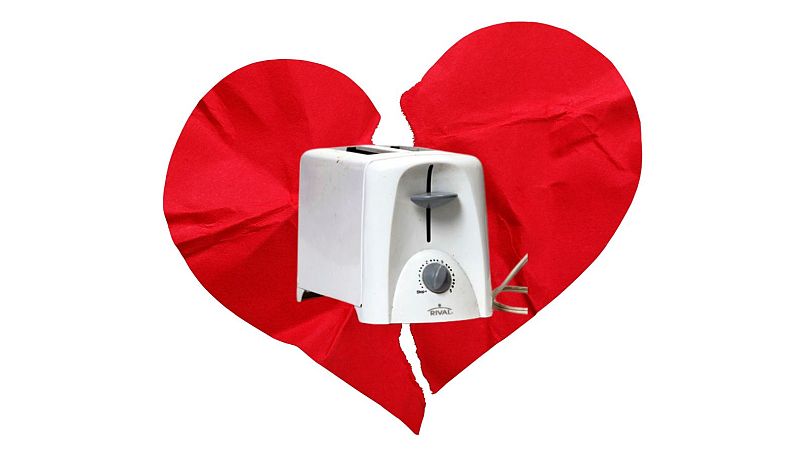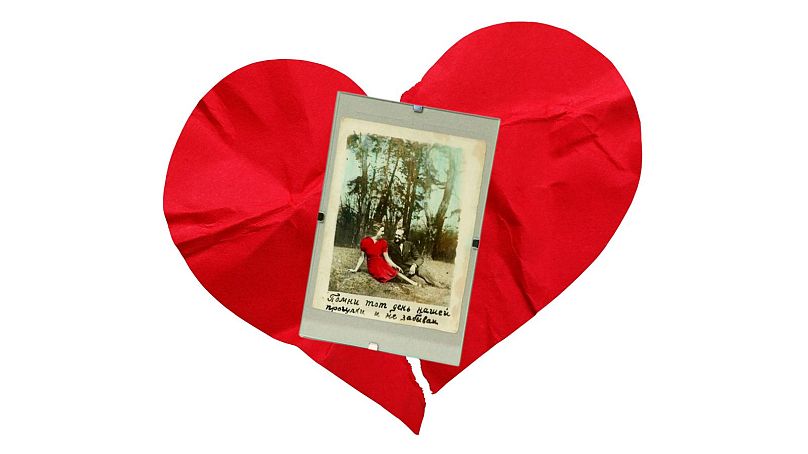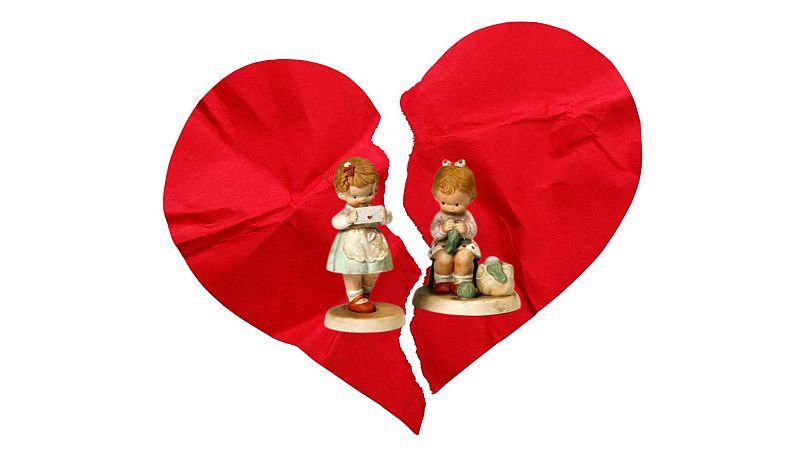Opened in 2010, the Museum of Broken Relationships has become the most visited museum in Croatia - and a reminder of the power physical objects hold to connect and heal us.
A discoloured Snoopy plush. A little rubber piggy. A doodle by a stranger.
Meaningless to most, these objects are the last remains of long languished love stories that now sit on display at the Museum of Broken Relationships in Zagreb, Croatia.
Whether bought for an anniversary, part of an in-joke or just random accomplices to life’s most intimate moments; ‘things’ are often all we have left to hold onto when a relationship ends; host to fragments of memories like Harry Potter Horcruxes.
The dilemma, then, is what do you do with such objects? Too painful to keep, too meaningful to chuck.
In 2003, Croatia-based artist Dražen Grubišić was facing this philosophical quandary over a tiny wind-up bunny that he used to take on trips with his ex girlfriend, film producer Olinka Vištica.
“We started discussing how strange it is that something so banal can have so many memories just for two people, and it means absolutely nothing to anyone else. And wouldn't it be great if there was a place where you could just store these objects so that they're safe, but they're far away from you,” Grubišić told Euronews Culture.
Thus, an idea was born. In 2006, Grubišić and Vištica began collecting objects of heartbreak from family, friends and friends of friends after being accepted to exhibit at the art biennial, Zagreb Salon.
“When you do a crowdsourced project, you can't really direct which way it's going to go. So you're sort of at the mercy of what people will give you. And to our surprise, it was not repetitive. It was not boring. It was super interesting. The stories were funny, sad,” Grubišić explained.
The exhibition was an immediate success, resulting in the duo touring what was meant to be a one time art project around the world for four years, collecting more and more items until Grubišić’s studio was so full of boxes that they decided to set up a permanent home for it all in Croatia.
The very first private museum in Croatia (for which the law was later changed so that private people could have museums), it also became the most visited and attracted global media attention.
Love, upside down
The current collection stands at around 4,600 objects, their stories each anonymous. While many are focused on romantic love, there are also tales from those that have had to leave behind their country, religion, family, friends or even certain foods due to allergies.
For the donators, it's an opportunity to move on, reflecting then releasing any heavy emotions attached to their past.
“They realise that this was the love of their life and they sort of want to want to put it on a pedestal, want to show it to people. Maybe they didn't play it right and, you know, they feel sad because of that, but still, for me, it's a love museum, just upside down," Grubišić said.
Some of the most popular objects are those that were used as vehicles for pettiness, like ‘The toaster of vindication’, storied with: “When I moved out, and across the country, I took the toaster. That'll show you. How are you going to toast anything now?”
Then there’s ‘An Exe Axe’, used by a Berliner to chop up every piece of their ex-girlfriend’s furniture after she left for another woman.
“Two weeks after she left, she came back for the furniture. It was neatly arranged into small heaps and fragments of wood. She took that trash and left my apartment for good. The axe was promoted to a therapy instrument,” the donator writes.
Others are sweeter - and much sadder, like the postcard submitted by a 70-year-old woman. She received it as a teenager from her neighbour's son: “He had been in love with me for three years. Following the old Armenian tradition, his parents came to our home to ask for my hand. My parents refused saying that their son did not deserve me. They left angry and very disappointed. The same evening their son drove his car off a cliff…”
While many visitors are drawn to the museum for its quirky concept, they’re met with an unexpectedly profound experience, the raw honesty and vulnerability at the heart of it all touching upon universalities in the human experience.
Eavesdropping on conversations from the adjoining cafe, Grubišić is often moved by peoples’ reactions; how it opens them up to strangers and releases the strain of painful memories.
“In today's world, where you’re surrounded by social media that is glowing with happiness and everyone's having an amazing life and stuff, you don't feel that you should share your bad moments in a way. And then here, you realise, okay, It's all around me. All these people, all these stories. What I’m going through, it’s normal.”
A reflection of life
Over the years, the project has become a fascinating documentation of societal history. Whatever is happening in the world is reflected in our relationships, with war and the Covid pandemic being two huge catalysts for those that have lost touch with the people and places they once loved.
Grubišić noticed this especially in some of the stories he received from Mexico City.
“During the pandemic, you had somebody's family member dying. You had people who were forced to be separated because they were at different places at the time, or they were forced to be together, so relationships failed because of that.”
The more their collection grows, the more it allows Grubišić to observe then illustrate certain themes from human life, curating and updating different displays in the museum's eight rooms.
There's also the opportunity for anyone to upload their memories to the website, which makes all the more sense in a world where our relationship remnants are increasingly non-physical objects, but instead the digital husks of virtual communication, like WhatsApp chats and memes.
"My daughter, she's 16. I can imagine her relationship going for 2 or 3 years without any physical object whatsoever," said Grubišić, who still believes that physical objects hold the most emotional power.
The tangibility of something real makes it easier to connect with on a deeper level, allowing us to sit with nostalgia rather than swiping through it more superficially.
This is perhaps why younger people are reportedly returning to more analogue mediums, such as vinyl and film cameras. Objects, no matter how mundane or bizarre, allow us to say for certain: We were here. This was real.
But what has running a museum all about broken relationships taught Grubišić about, well, relationships?
"Not much. The more you know, the more you have a feeling you don't know."
It has, however, shown him how creative people can be when they're in love.
"Some of the objects that we have are like, how did they think of this? How much time, how much effort some people put in just to make somebody laugh or to make somebody happy or feel loved? Then these objects end up in our museum, and I love them."















